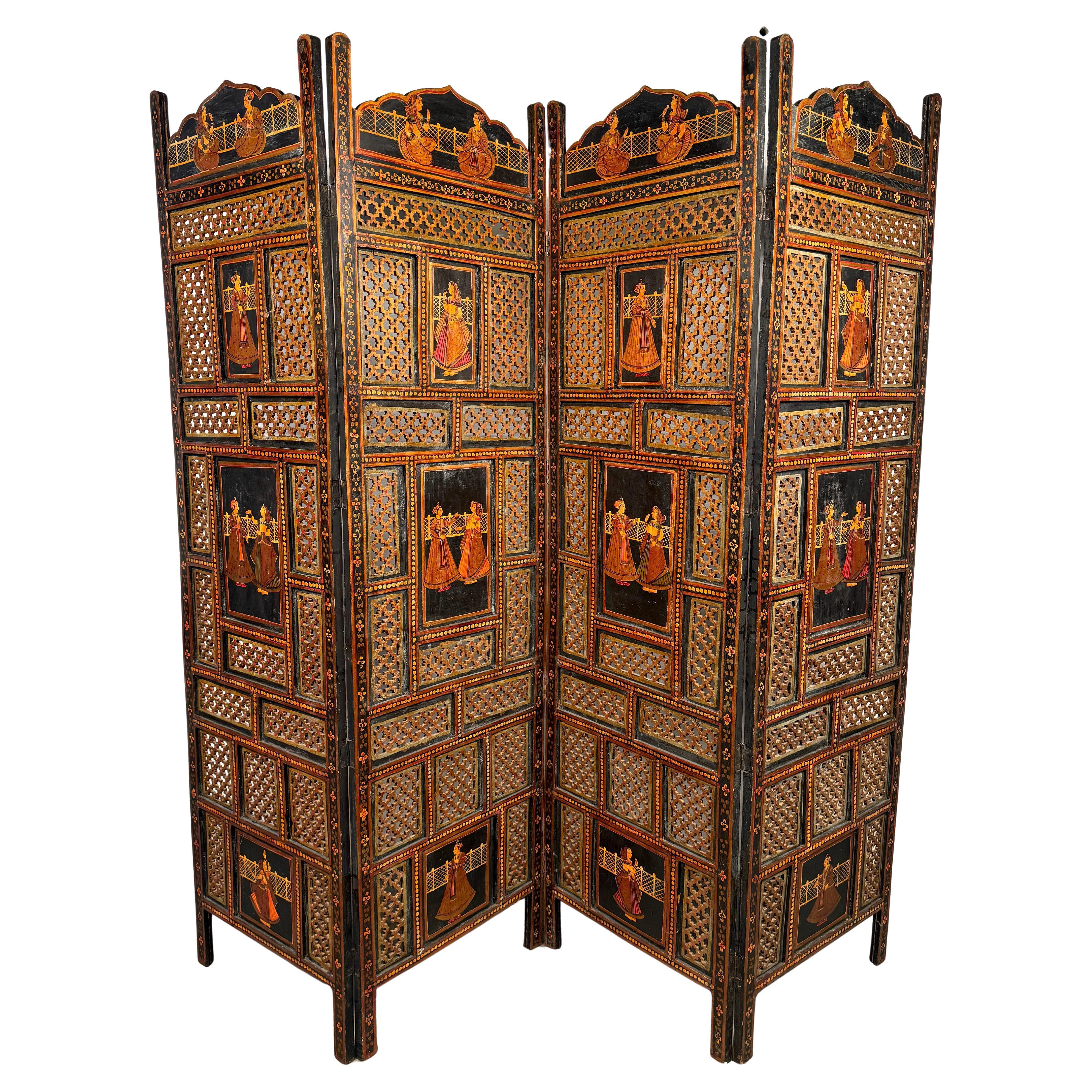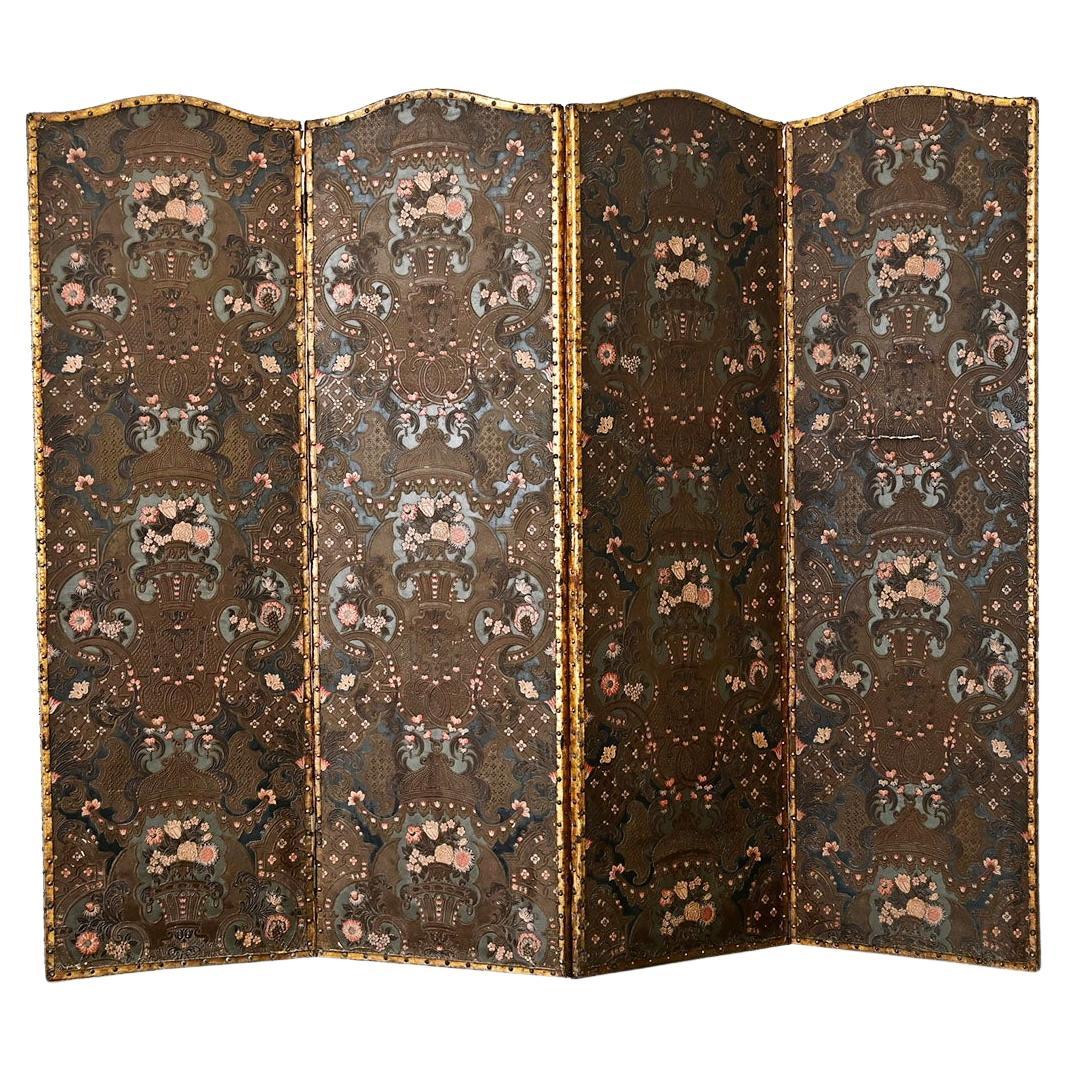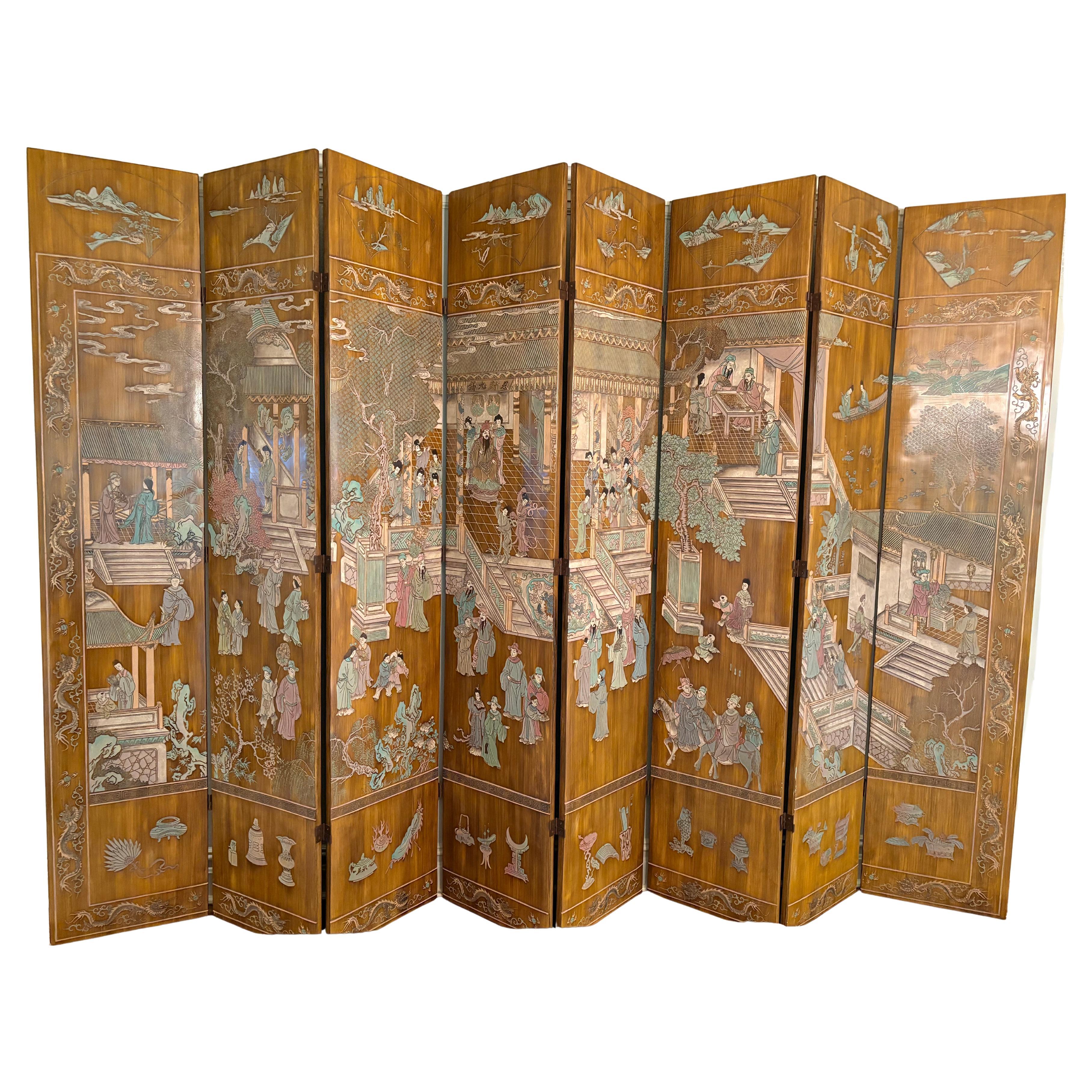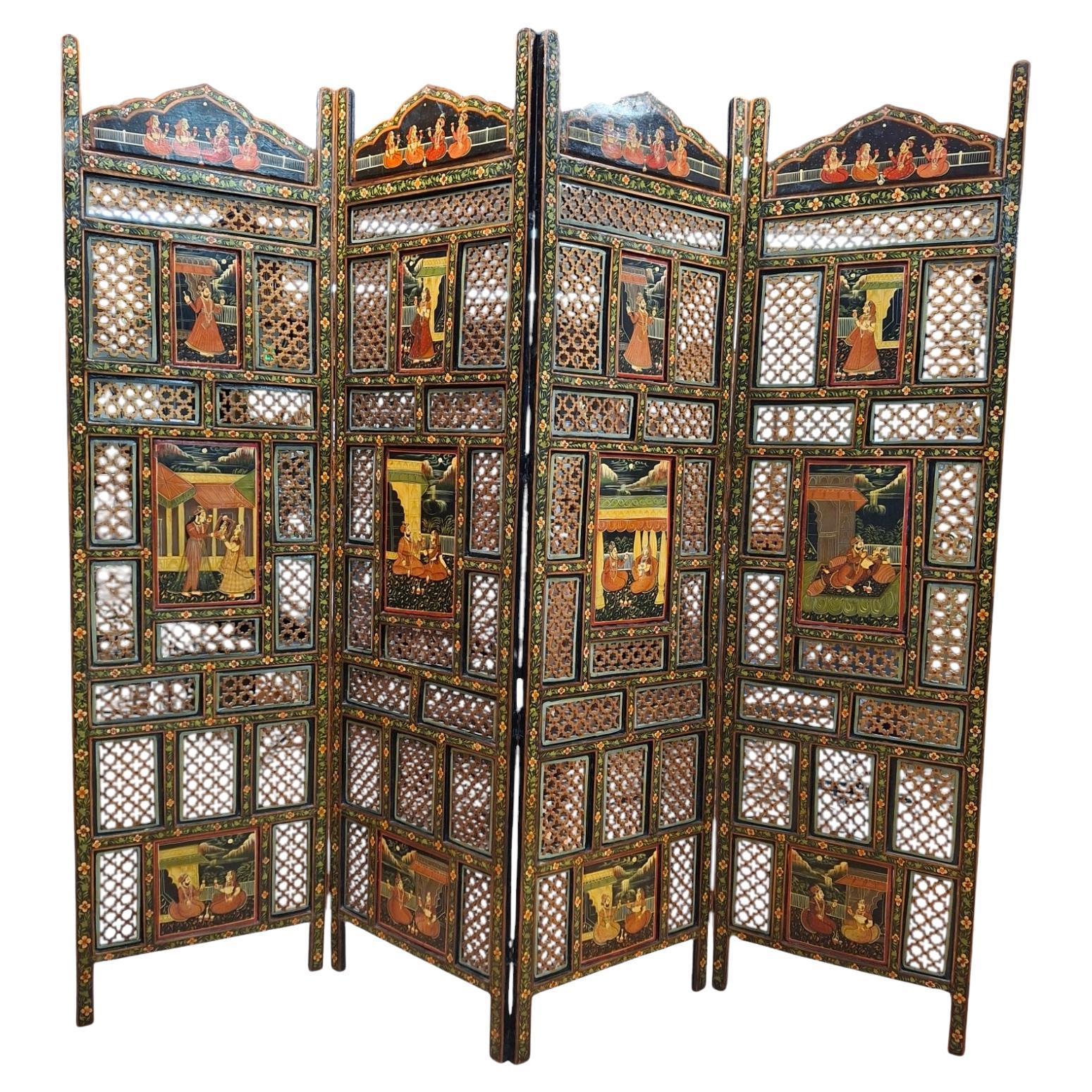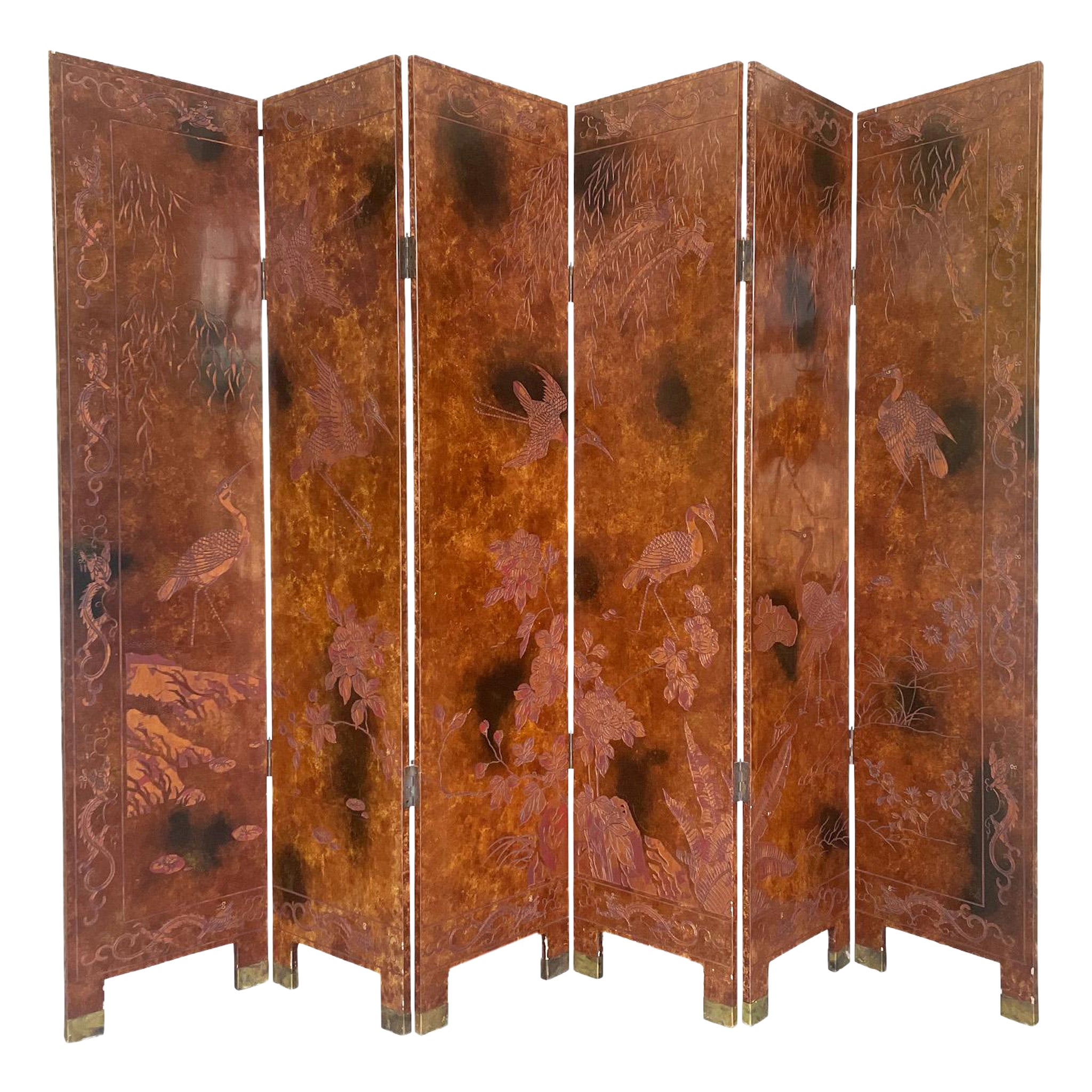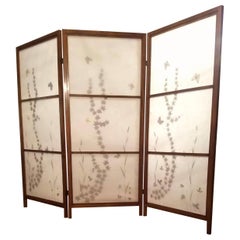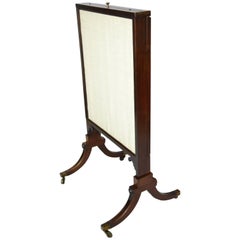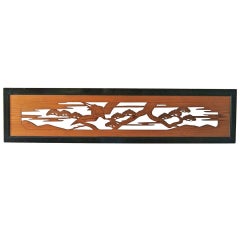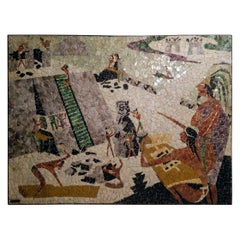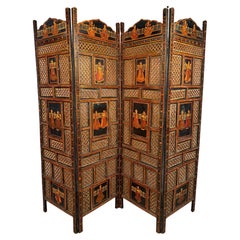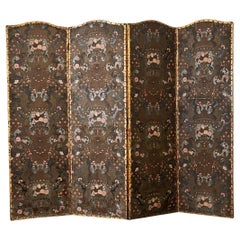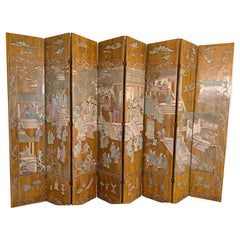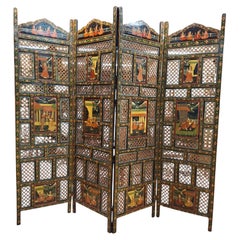Items Similar to Salvador Corona Folding 4 Panel Floor Screen of Patzcuaro, Acapulco circa 1938
Want more images or videos?
Request additional images or videos from the seller
1 of 10
Salvador Corona Folding 4 Panel Floor Screen of Patzcuaro, Acapulco circa 1938
$20,000
$42,50052% Off
£15,117.52
£32,124.7352% Off
€17,372.72
€36,917.0352% Off
CA$27,849.88
CA$59,180.9952% Off
A$30,981.85
A$65,836.4352% Off
CHF 16,241.07
CHF 34,512.2852% Off
MX$378,590.61
MX$804,505.0452% Off
NOK 206,809.79
NOK 439,470.8152% Off
SEK 194,682.81
SEK 413,700.9752% Off
DKK 129,680.76
DKK 275,571.6252% Off
Shipping
Retrieving quote...The 1stDibs Promise:
Authenticity Guarantee,
Money-Back Guarantee,
24-Hour Cancellation
About the Item
Salvador Corona painted four-panel wooden floor screen created in his studio in Mexico circa 1938.
This rare hand crafted multi medium room divider was the property of the daughter of one of Mexico's wealthiest families of the period, who married the head of an international railroad supply company in their Warren McArthur furnished apartment on Park Avenue.
The custom designed Warren McArthur furniture was a gift of the Pullman Company.
In the early 1950s she opened a shop in Boothbay, Maine and later on upper Lexington Avenue specializing in the crafts of Mexico.
This may have been a wedding present to her from the artist, her family or a close friend.
The screen shows a the harbor of 19th Century Acapulco with the major buildings with gold leaf tiled roofs, Spanish galleons in the bay, a whale spouting in the distance, birds, and silver leafed palm trees .
The harbor scene is bordered in gilt painted cord. Within which are appliquéd cutout medallions of various local fish and air bubbles covered in tinfoil ,a new material in the 30s. The tinfoil is finely etched in a variety of intricate patterns. Some of the appliqués are glazed in gold.
The reverse side of the screen is an ivory white back ground with vignettes from the Maximilian era of Mexico.
The screen is in good condition with wear consistent with its age.
Salvador Corona was born on his family's ranch Hacienda Mideras in the Mexican state of Chihuahua. Corona’s family moved to Mexico City in 1903 when he was 8. He attended the New English College in Mexico and then crossed into a career in bull fighting entering the ring for the first time in 1913. In 1919 in Guadalajara he was gored and turned to painting.
He was given his first painting lessons by fellow bullfighter Jose Jimenez.
Corona’s painting career spanned many decades and diverse formats including murals, furniture and decorative household items.
In 1939, the Mexican government invited him to exhibit a set of painted furniture at it's booth at the World’s Fair in New York City. There, it was presented to President Franklin D. Roosevelt as a gift. Corona’s work attracted many famous patrons, including the Duchess of Windsor, Gary Cooper and writer Clare Booth Luce.
Salvador Corona’s work featured many Spanish Colonial vignettes, and he became an authority on Spanish and French costumes of the 1800s, which are frequently depicted in his paintings. His favorite subjects often included Mexican Colonial criollos and Purepecha (Tarascan) Indians. Birds and other animals feature prominently in his work.
His traditional self-developed folk art style images depicted pastoral colorful scenes of Maximilian era Mexico painted on white backgrounds.
His work can be divided into three categories: a vice-regal era with European and Creole noblemen mixed with Indians; stylized landscapes of Patscuaro, Acapulco or the Canal of Santa Anita; and his iconographic Mexican Virgins painted in tones of blue, purple, and gold often encrusted with mother of pearl.
Corona moved to Tucson in 1950. His studio and residence was located at 1701 East Speedway Boulevard, and then 902 North 4th Avenue overlooking Catalina Park.
- Creator:Salvador Corona (Artist)
- Dimensions:Height: 72 in (182.88 cm)Width: 72 in (182.88 cm)Depth: 1 in (2.54 cm)
- Style:Rancho Monterey (Of the Period)
- Materials and Techniques:
- Place of Origin:
- Period:
- Date of Manufacture:1938
- Condition:Wear consistent with age and use. Minor fading. Excellent vintage condition.
- Seller Location:Camden, ME
- Reference Number:Seller: App 4971stDibs: LU89843746562
About the Seller
5.0
Platinum Seller
Premium sellers with a 4.7+ rating and 24-hour response times
Established in 1984
1stDibs seller since 2010
236 sales on 1stDibs
Typical response time: 1 hour
- ShippingRetrieving quote...Shipping from: Camden, ME
- Return Policy
Authenticity Guarantee
In the unlikely event there’s an issue with an item’s authenticity, contact us within 1 year for a full refund. DetailsMoney-Back Guarantee
If your item is not as described, is damaged in transit, or does not arrive, contact us within 7 days for a full refund. Details24-Hour Cancellation
You have a 24-hour grace period in which to reconsider your purchase, with no questions asked.Vetted Professional Sellers
Our world-class sellers must adhere to strict standards for service and quality, maintaining the integrity of our listings.Price-Match Guarantee
If you find that a seller listed the same item for a lower price elsewhere, we’ll match it.Trusted Global Delivery
Our best-in-class carrier network provides specialized shipping options worldwide, including custom delivery.More From This Seller
View AllJapanese Floor Screen Shoji Paper Natural Elements Elmwood Frame, 1950-1960
Located in Camden, ME
A Japanese three panel folding floor screen framed in Japanese Elmwood each panel encasing a large single Washi paper sheet with natural inclusions from Japan created in the 50's/60s...
Category
Mid-20th Century Japanese Mid-Century Modern Screens and Room Dividers
Materials
Elm, Paper
Mahogany Fireplace Screen 19th Century Antique American Sheraton circa 1830
By Thomas Sheraton
Located in Camden, ME
Unusual American mahogany extendable fireplace screen in the style of Thomas Sheraton.
The classically styled mahogany frame with ebonized ...
Category
Antique Mid-19th Century English Sheraton Screens and Room Dividers
Materials
Mahogany
Japanese Carved Wood Ramna, "architectural transom" circa 1910
Located in Camden, ME
Japanese ramna crafted of carved sugi wood surrounded by a black lacquered frame. The ranma depicts a crane soaring above stylized pines and clouds.
The ramna would have original...
Category
Early 20th Century Japanese Architectural Elements
Materials
Lacquer, Wood
Los Castillo E.Alvarado Arquitectura Mosaic with Montezuma Mexico, 1959
By Alvarado, Los Castillo
Located in Camden, ME
An E. Alvarado 1959 mosaic wall panel commissioned at the Taxco showroom of Los Castillo Plateros depicting the 1467 reconstruction of the temple of Huitzilopochtii after its damage ...
Category
Mid-20th Century Mexican Mid-Century Modern Decorative Art
Materials
Amethyst, Carnelian, Lapis Lazuli, Malachite, Multi-gemstone, Opal, Tour...
Brutalist Torch Cut Wall Piece Style of Silas Seandel c.1980
By Silas Seandel
Located in Camden, ME
Complex overlays of brass, iron and copper make this Butterfly garden an interesting execution of metal surfaces. Presented in a heavy wooden frame with a secondary pierced iron arab...
Category
Late 20th Century American Mid-Century Modern Wall-mounted Sculptures
Materials
Brass, Copper, Steel
Jon B. Wahling Fiber Wall Art Suspended from a Welded Steel Armature, 1970s
By Jon B. Wahling
Located in Camden, ME
Fiber Wall Art by Jon. B. Wahling (1938 - 2020)
similar to Sheila Hicks or Lenore Tawney.
"Wahling was dominating the fiber scene in the U.S. by the l...
Category
Late 20th Century American American Craftsman Wall-mounted Sculptures
Materials
Wool, Angora, Hemp
$14,800 Sale Price
20% Off
You May Also Like
Vintage Anglo-Indian Painted and Carved Four-Panel Folding Screen
Located in Brooklyn, NY
Add a touch of global sophistication to your space with this stunning mid-century Anglo-Indian room divider, a true testament to artisanal craftsmanship and timeless design. Meticulo...
Category
Mid-20th Century Mid-Century Modern Screens and Room Dividers
Materials
Wood
Spanish 19th Century Leather Folding Screen
Located in Baton Rouge, LA
A mesmerizing, Spanish 19th century tooled leather folding screen–over six feet tall–embossed with floral & foliate motifs that cover the surface to expansive effect. The four connec...
Category
Antique 19th Century Spanish Spanish Colonial Screens and Room Dividers
Materials
Metal
Dramatic Large 8 Panel Coromandel Screen
Located in Hopewell, NJ
Dramatic very large ornate coromandel screen having gold background and meticulously carved and painted figural scenes. Back side is solid color lacquer.
Category
Vintage 1950s Chinese Chinese Export Screens and Room Dividers
Materials
Wood, Lacquer
Early 20th Century Indian Polychrome Four Panel Folding Screen
Located in San Francisco, CA
Early 20th Century Indian Polychrome Four Panel Folding Screen
Category
Early 20th Century Indian Screens and Room Dividers
Materials
Teak
Beautiful Graduated 3 Panel Hand Painted Screen with Asian Motif
Located in Hopewell, NJ
Beautiful hand painted Deco style 3 panel screen having an Asian motif with mustard background and birds, trees and flowers in pink, cream, blue and green. The top of the screen has...
Category
Vintage 1920s American Art Deco Screens and Room Dividers
Materials
Wood
20th Century Chinese Six-Panel Folding Screen
Located in New York, NY
This richly designed Chinese folding screen consists of 6 individual panels. It was made in the 2nd quarter of the 20th Century. One side has a black lacquered ground that unfolds a ...
Category
20th Century Asian Screens and Room Dividers
Materials
Wood
$4,640 Sale Price
20% Off
More Ways To Browse
A Vintage Vice
Folding Ring
French Panel Room Divider
Colonial Living Room Set
Mexican Pearl
The Duchess Of Windsor
Vintage Mexican Ring
Vintage Applique Patterns
Mexican Silver Ring
Folding Screen Gold Leaf
Indian Wood Screen
Bull Ring
Birds Folding Screen
Hacienda Furniture
Fish Ring Gold
Vintage 1950s Wedding Rings
Foil Back Ring
Mother Of Pearl Fish
